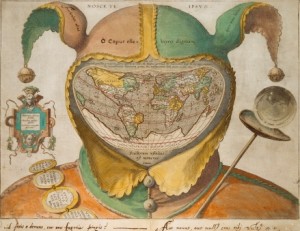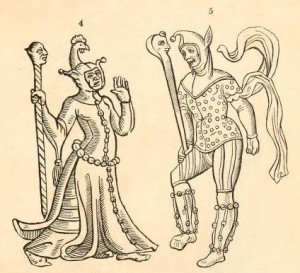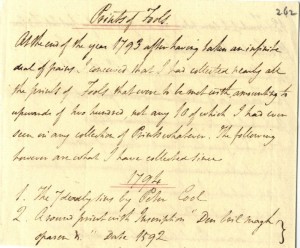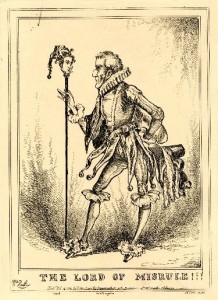Douce’s interest in images of fools and jesters was not limited to his research for the ‘Dissertation on the Clowns and Fools of Shakspeare’, published as part of his Illustrations of Shakespeare and of ancient manners (London, 1807). Plates like the one below evince how Douce drew upon his own collection to supply the wood-engraver John Berryman with materials for this publication:
But Douce had started gathering representations of fools much earlier -the following note, kept among his prints, states that, by 1793, he had ‘collected nearly all the prints of Fools that were to be met with, amounting to upwards of two hundred’:
Douce kept collecting foolscaps and referring to them whenever he wanted to satirize or to ridicule contemporary public figures, and to show his despair at the turn taken by current affairs, as can be seen in his correspondence:
My fools caps numerous as they are will not be sufficient for the ten thousandth part of those who want them, & who are scarcely inferior in number to the knaves who are constantly gulling them. Knavery stalks through the land; not as heretofore in masquerade, but barefaced, and with bold and open defiance of every thing in the shape of virtue or honesty.
(Letter to George Cumberland, 3 April 1813)
He probably found his reflection on the universality and pervasiveness of human folly corroborated by this Fool’s Cap Map of the World, which might be the same ‘curious old print of the world as a fool’s head’ recorded in 1811 in his ‘Collecta’ as a gift from the antiquary Thomas Sharp:

Anonymous, Fool's Cap Map of the World, c. 1590, hand-coloured engraving (The Ashmolean Museum, Oxford)
The same motif was used by William Heath in this satirical print concerning Wellington’s increasing unpopularity as Prime Minister before his resignation in 1830:
Or, as Douce said,
Fools caps I have in plenty, enough to fit all the noddles that have governed, do govern, & shall govern us for some time to come, but they are not of the letter paper kind & so you are better off as to my garruling in a common 4to.
(Letter to George Cumberland, 19 December 1824)



